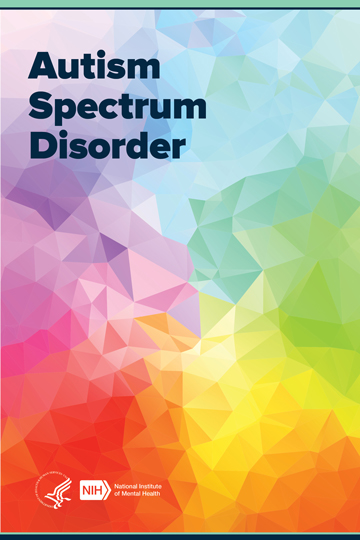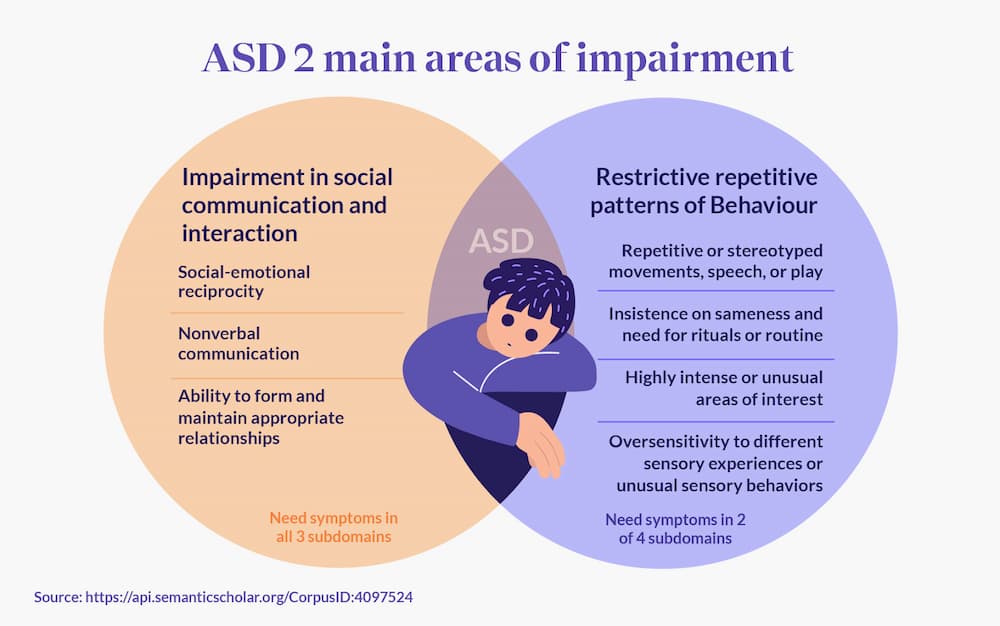Positives of guided interaction guided by an Autism Therapist
Comprehending the Influence of Behavioral Autism on Life and Social Communications
You could not understand how deeply behavioral autism affects day-to-day life and social interactions. People on the range commonly navigate a globe full of interaction hurdles and sensory overload. These challenges can cause aggravation and isolation, affecting their connections and general wellness. Comprehending these nuances is important for promoting helpful atmospheres. What approaches can we apply to produce even more significant links and comprehensive rooms? The solutions might amaze you.
Specifying Behavioral Autism and Its Qualities
Behavioral autism, often described as autism spectrum condition (ASD), encompasses a variety of problems defined by difficulties in social interaction, communication, and recurring habits. You might notice that individuals with ASD frequently battle to translate social cues, which can bring about misunderstandings in discussions. They may locate it difficult to develop eye get in touch with or participate in little talk, making social situations feel overwhelming.
Interaction difficulties can manifest in various methods, from postponed speech growth to a choice for using fewer words. By acknowledging these attributes, you can foster an environment that promotes acceptance and encourages reliable interaction, assisting individuals with autism grow in their day-to-day communications.
The Range of Autism: Recognizing Irregularity in Habits
Autism range disorder (ASD) isn't a one-size-fits-all diagnosis; it differs extensively amongst people. You may experience individuals who are very spoken and involve conveniently in discussions, while others may choose solitary tasks or interact non-verbally.
Moreover, the way individuals with ASD respond to sensory input can vary considerably; some could be bewildered by loud noises or bright lights, whereas others grow in promoting environments. The spectrum also includes distinctions in social interactions; some people may battle to translate social signs, while others browse social setups with relative simplicity. Understanding this irregularity is crucial, as it helps you appreciate everyone's one-of-a-kind experience and tailor support to their specific needs, cultivating a more comprehensive environment for everyone.
Interaction Obstacles Faced by People With Autism
When you interact with individuals on the autism range, you might discover their distinct communication challenges. They usually deal with troubles with both verbal and nonverbal hints, which can influence their social interactions. Comprehending these obstacles is vital for fostering much better connections and support.
:max_bytes(150000):strip_icc()/VWH-LauraPorter-SpectrumOfAutismTraits-4000x2700-0b5d3311e5794f6ca7e72bdc4672eae5.png)
Verbal Communication Troubles
Lots of individuals on the autism range experience verbal communication troubles that can significantly impact their day-to-day communications. You may discover it challenging to share your thoughts, feelings, or needs plainly. This can lead to frustration for both you and those around you, as misconceptions happen. You might battle with starting conversations, keeping a topic, or recognizing nuances in speech. Frequently, you could favor making use of simple language or repetitive expressions, which can limit your capability to involve in deeper discussions. Your speed, tone, or quantity could not align with social expectations, creating others to misinterpret your objectives. Identifying these challenges can assist you and your assistance network develop approaches to improve communication and promote better connections with others in your day-to-day live.
Nonverbal Communication Obstacles
Spoken interaction isn't the only obstacle people on the autism range face; nonverbal interaction obstacles can be simply as considerable. You might locate it difficult to interpret body movement, face expressions, and eye get in touch with, which are crucial for reliable interaction. These obstacles can cause misconceptions or misconceptions of social hints, making communications feel complex or frustrating. You may struggle to share your very own emotions through nonverbal methods, leaving others unclear of your intentions or sensations. This detach can produce sensations of seclusion and frustration. Identifying these barriers is essential for cultivating understanding and compassion in your interactions. By dealing with nonverbal communication, you can find strategies to improve your social experiences and enhance your overall quality of life.
Social Communication Effects
Social interactions can frequently feel frustrating due to the one-of-a-kind interaction difficulties faced by individuals with autism. Identifying these obstacles can assist you discover strategies to boost interaction, such as practicing social skills in secure setups or using aesthetic aids. Comprehending your requirements allows you to browse social interactions with better self-confidence and ease.
Social Interaction and Partnership Building in Autism
While structure relationships can be testing for individuals with autism, recognizing their special perspectives and interaction styles can cultivate purposeful connections. You might see that several people on the spectrum like direct communication and might battle with social cues or tiny talk. By being simple in your interactions, you can aid produce a setting where they feel comfy.
Make the effort to observe and listen just how they share themselves. This insight can lead you in steering conversations more successfully. Taking part in shared rate of interests can additionally function as a bridge to much deeper links. Whether it's a hobby, a favored show, or a shared passion, these common threads can open doors to relationship.
Every Day Life Regimen: Navigating Techniques and obstacles
Maneuvering every day life regimens can be particularly challenging for individuals with autism, especially when unexpected changes happen. You may locate convenience in having an organized timetable, as it aids you anticipate what's next. When disruptions take place, it's regular to really feel nervous or overwhelmed. To navigate these obstacles, take into consideration applying visual routines or checklists. These tools can offer clarity and reassurance.
Developing a regimen that consists of sensory breaks can also be valuable. This helps create an understanding atmosphere.
Last but not least, method mindfulness techniques to take care of anxiety and anxiety. Straightforward breathing exercises or grounding strategies can make a considerable distinction. By incorporating these approaches, you can enhance your day-to-day routine and decrease disturbances, making life really feel much more convenient.
Staminas and Capacities of Individuals on the Autism Spectrum
Understanding daily life routines is just one aspect of the autism experience. Lots of people on the autism range have amazing toughness and capabilities that establish them apart.
Furthermore, your memory abilities often shine, particularly in areas of interest. Autism Spectrum Therapies. This knack for retaining information can make you a valuable source in areas like technology, art, or scientific research. You may additionally display strong aesthetic reasoning, enabling you to visualize complex concepts and resolve issues creatively
Additionally, your one-of-a-kind point of view on click this site the world can cultivate empathy and understanding in others, enriching social communications. Welcoming these staminas not just improves your confidence yet also helps others value the diverse skills you bring to the table.
Producing Inclusive Environments for People With Autism
Creating comprehensive environments for people with autism begins with creating sensory-friendly spaces that accommodate their special needs. You can likewise foster chances for social communication, assisting to construct friendships and connections. By making these adjustments, you'll add to a more inviting environment for everybody.
Designing Sensory-Friendly Spaces
While designing sensory-friendly areas, it's vital to show on the one-of-a-kind requirements of people with autism. Beginning by choosing soothing shades and soft lights to create a comforting environment. Incorporate peaceful zones where individuals can recharge and retreat when overwhelmed. You'll intend to reduce loud noises and disturbances, using soundproof materials or white noise devices to assist maintain harmony. Think about tactile aspects like soft materials or fidget-friendly items that can supply convenience. Identify that rooms are adaptable, permitting for very easy reformation to suit various tasks. Include visual schedules or clear signs to help individuals browse the room with confidence. By attentively integrating these elements, you can develop a welcoming ambience that supports sensory needs and advertises general well-being.
Promoting Social Communication Opportunities
Creating sensory-friendly spaces not only addresses individual comfort yet additionally establishes the stage for significant social communications amongst people with autism. Motivate peer mentoring, matching individuals with autism webpage with helpful peers who can assist them via social circumstances. By implementing these approaches, you can enhance social opportunities, assisting people with autism construct friendships and strengthen their social skills in a safe, welcoming environment.

Regularly Asked Questions
Just How Can Friends Support A Person With Behavioral Autism?
You can support a good friend with behavioral autism by holding your horses, listening actively, and valuing their boundaries. Take part in tasks they enjoy, interact honestly, and develop a comfy environment where they feel valued and comprehended.
What Resources Are Readily Available for Parents of Kid With Autism?
You can explore various resources for moms and dads of kids with autism, including support teams, instructional websites, and regional neighborhood services. Getting in touch with other moms and dads can likewise supply important insights and shared experiences to aid browse challenges.
Can Behavioral Autism Change Gradually?

Yes, behavioral autism can transform with time. You could notice shifts in communication, social abilities, and behavior as your kid grows. Early intervention and support typically play crucial duties in these developmental modifications.
Exactly How Do Sensory Sensitivities Influence Life?
Sensory level of sensitivities can make day-to-day experiences frustrating. You may deal with loud noises or bright lights, bring about stress and anxiety or evasion. Locating settings that suit your requirements can substantially enhance your comfort and general day-to-day live.
What Are Common Misconceptions Concerning Behavioral Autism?
You may assume behavioral autism only impacts communication skills, yet it's more complicated. Lots of assume people do not basics have empathy or knowledge, which isn't true. Understanding these misconceptions aids foster acceptance and assistance for those on the range.
Behavioral autism, typically referred to as autism spectrum condition (ASD), encompasses a variety of problems defined by difficulties in social interaction, communication, and recurring actions.Social communications can typically really feel overwhelming due to the special communication difficulties encountered by individuals with autism.Creating sensory-friendly rooms not only addresses private comfort yet also establishes the phase for significant social communications among individuals with autism. Urge peer mentoring, matching individuals with autism with supportive peers that can guide them via social scenarios. By carrying out these strategies, you can improve social possibilities, helping individuals with autism develop relationships and enhance their social abilities in a safe, inviting atmosphere.